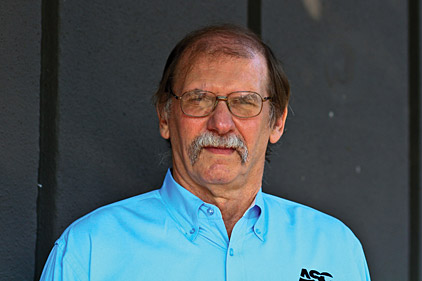Regulatory Review: TSCA Reform - The Time is Now
Any further compromise will most likely lead to the falling away of considerable industry support.

By the time you read this column, the battle for Toxic Substance Control Act (TSCA) reform will be fully engaged. Battle lines will have been drawn, cosponsors for bills will have been recruited, and charges and counter charges will have been swapped back and forth in Senate committee hearings.
Spring has arrived in Washington, D.C.—cherry blossoms blooming, subways packed with confused tourists, Nats fans filling the stadium, and the proverbial Congressional street fight over TSCA. Nothing much changes around here, but maybe this time it will be different. I think it has to be.
I’m not going to rehash the previous TSCA battles, but I will say that the industry has listened, learned and responded positively to much of the criticism of the last six years. The latest version of reform legislation introduced in March by Senators David Vitter and Tom Udall made further concessions to critics of last year’s proposal. This effort, The Frank R. Lautenberg Chemical Safety for the 21st Century Act (S. 687), has now probably reached the tipping point; any further compromise would most likely lead to the falling away of considerable industry support.
Still, there are some who remain critical. Let’s look at couple of the biggest complaints and see if more compromise is needed.
Critics charge that the bill still places undue restrictions on states’ ability to protect its citizens. It seems many on the other side continue to ignore a key premise of TSCA: it is a commerce law. Let me repeat: it is law that regulates commerce within the U.S. Unless manufacturers can be assured that they can sell their products in all national jurisdictions, then they are likely not going to be sold. It is—and always has been—the federal government’s responsibility to determine whether materials in individual products are safe for all Americans. This is not the responsibility of the California DTSC, nor Maine, nor Washington, nor Vermont’s Department of Environment.
If critics have a question about that, I would refer them to a little document written a couple of hundred years ago: the Tenth Amendment of the U.S. Constitution, which states that the federal government has only those powers specifically granted by the Constitution. These powers include the power to declare war, to collect taxes, to regulate interstate business activities, and others that are listed in the articles or in subsequent constitutional amendments.
In addition, critics say the proposal is not aggressive enough, with the U.S. Environmental Protection Agency (EPA) only being required to test 10 high-priority chemicals in the first year. But these critics seem to want to purposely ignore that, within five years, the bill would require the agency to increase that level to 25 annually. The bill also makes clear that any assessment work already under way can continue, meaning that close to 90 of the EPA’s highest priority chemicals are already under evaluation and will continue on to assessment over the next few years, even as the agency develops rules for any TSCA legislative revision.
S. 687 would also establish a new fee program that would provide additional funds to the agency for this assessment, and would help manufacturers get determinations in a faster manner on chemicals where questions may have been publicly raised. Another nagging complaint seems to be concern with the low-priority designation for chemicals. Throughout the years of debate, there have been times when some critics seem incredulous that the EPA might find and declare a chemical safe and not require an assessment. Now, the latest Udall-Vitter bill includes new language requiring that the agency would be required to match the number of chemicals designated as high priority (ones that get a safety evaluation) with an equal number of low-priority designates. This concept seems to be extremely troubling for opponents. I suspect that these true believers, deep in their hearts, believe that every single chemical and every single product with every single product in it needs to undergo complete EPA scrutiny. I wonder how long that would take—and if the critics care.
Sometimes it seems that a logical approach to addressing TSCA reform is as not important to the critics as retaining this issue so that, at campaign time, it can be rolled out as a contributions generator in the war against the “evil” opposition. Despite my nagging cynicism, I still think that the new Congress and the many members’ interest to get something done this year might win out. The ASC has committed time and resources to help make this happen. In June, members of our Board of Directors and other member company personnel will participate in the National Association of Manufacturers Manufacturing Summit and Fly-In. For two days, we will be talking to Congressional members and staff about issues that are critical to our industry—and I can tell you right now that TSCA will be first priority. If you also believe this may be our last legitimate shot at making difference in changing TSCA, you might want to consider a trip to Washington, D.C. this June.
Any views or opinions expressed in this column are those of the author and do not represent those of ASI, its staff, Editorial Advisory Board or BNP Media.
Looking for a reprint of this article?
From high-res PDFs to custom plaques, order your copy today!





